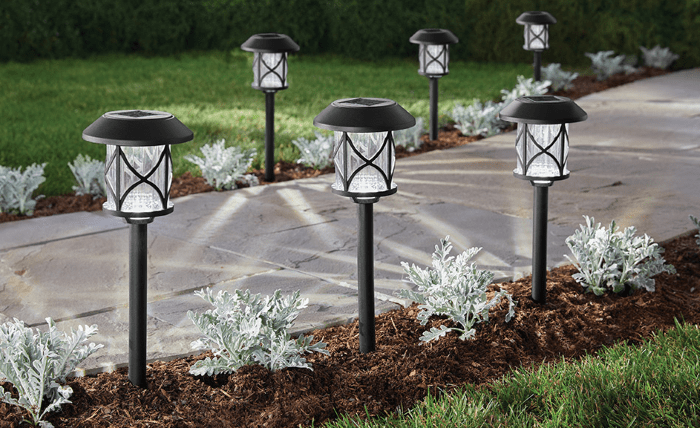
Creating an inviting and secure outdoor space often starts with the right illumination. Outdoor garden lights are essential not only for enhancing the aesthetic appeal of your garden but also for ensuring safety during night time hours. Whether you want to highlight a beautiful flower bed or make pathways visible, selecting the perfect lighting solution can transform your outdoor area into a charming, safe retreat.
Why Outdoor Garden Lights Matter
The right lighting balances two key functions: style and safety. On one hand, it accentuates the natural beauty of your garden, showcasing textures, colors, and landscaping features. On the other hand, it helps prevent accidents by illuminating pathways, steps, and potential hazards. Poorly lit gardens can be a tripping hazard, especially in homes with children or elderly residents. Therefore, making an informed decision about outdoor lighting fixtures is critical.
Consider Your Garden’s Style and Ambiance
Before diving into specific products, think about the atmosphere you want to create. Do you prefer a modern, minimalist look or something more rustic and cozy? Garden lighting can serve as an extension of your home’s style and personality. Here are a few styles to consider:
- Soft, Warm Lighting: Perfect for creating a relaxed, inviting atmosphere, warm tones work well with natural materials like wood and stone.
- Bright, Cool Lighting: Ideal for modern gardens with sleek lines and metal or glass features, cool light tones bring a crisp, contemporary feel.
- Colored or Accent Lights: For a playful or dramatic effect, consider colored LED lights or spotlights that highlight specific plants or garden sculptures.
Types of Outdoor Garden Lights
Understanding the different types of garden lights will help you decide which are best suited to your space and needs:
1. Path Lights
Path lights are small fixtures that line walkways and garden paths. They provide essential safety by marking the way, especially in dark or uneven terrain. Choose solar-powered path lights for easy installation and energy efficiency, or opt for wired models for more consistent brightness.
2. Spotlights and Floodlights
Use these to emphasize architectural elements, trees, or other focal points in your garden. Adjustable spotlights allow you to highlight specific areas, while floodlights cover larger spaces with broad illumination. For security purposes, floodlights with motion sensors can deter intruders and alert you to movement after dark.
3. String Lights
String lights add charm and warmth, making them a popular choice for garden parties and casual settings. They can be hung across patios, pergolas, or trees. While they create a cozy vibe, keep in mind that they are more decorative than functional for safety lighting.
4. Deck and Step Lights
Safety on stairs and decks is crucial. Installing small, recessed lights along steps or deck edges can prevent trips and falls. These lights often come in waterproof designs and are subtle enough not to interfere with the overall design of the space.
5. Lanterns and Post Lights
For a classic or vintage garden look, lantern-style lights or post lights provide both decorative appeal and practical illumination. These work well near entrances or garden gates, setting a welcoming tone while improving visibility.
Choosing the Right Lighting Material and Finish
Since garden lights are exposed to the elements, durability is key. Look for fixtures made of rust-resistant materials like stainless steel, brass, or powder-coated aluminum. Glass covers should be toughened or shatter-resistant to withstand weather changes. Additionally, finishes in bronze, black, or copper tones blend well with natural surroundings and require less maintenance.
Energy Efficiency and Technology
Advancements in lighting technology mean you don’t have to compromise style or safety for energy savings. LED bulbs, for example, use significantly less power and last much longer than traditional incandescent bulbs. Solar-powered lights eliminate wiring needs and reduce electricity bills, though their brightness and performance depend on sunlight exposure. Consider smart lighting systems that allow you to control your garden lights remotely or set schedules, combining convenience with efficiency.
Placement Tips for Maximum Impact and Safety
Where you place your outdoor garden lights is just as important as what type you choose. Here are some practical guidelines:
- Illuminate all entrances and pathways clearly.
- Use uplighting to accentuate trees and large shrubs.
- Avoid placing lights where they might cause glare or blind drivers or neighbors.
- Consider layering different types of lights to create depth and dimension.
- Use timers or motion sensors to conserve energy and ensure lights are on only when needed.
Maintenance and Longevity
Outdoor lighting requires occasional upkeep to stay effective. Clean fixtures regularly to remove dirt, leaves, and insects that can reduce brightness. Check for any signs of corrosion or wear, and replace bulbs promptly to maintain consistent lighting. Seasonal inspections will help you catch any wiring issues or damage caused by weather.




